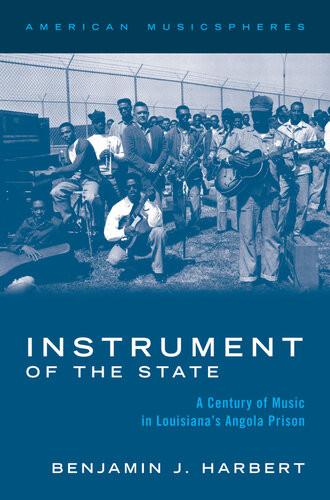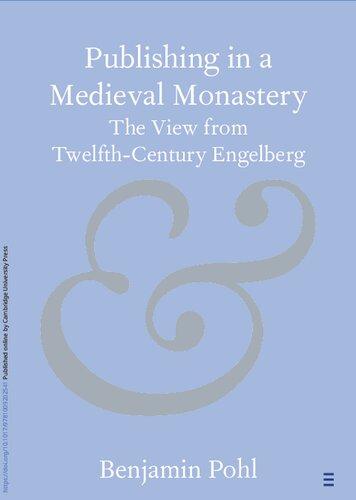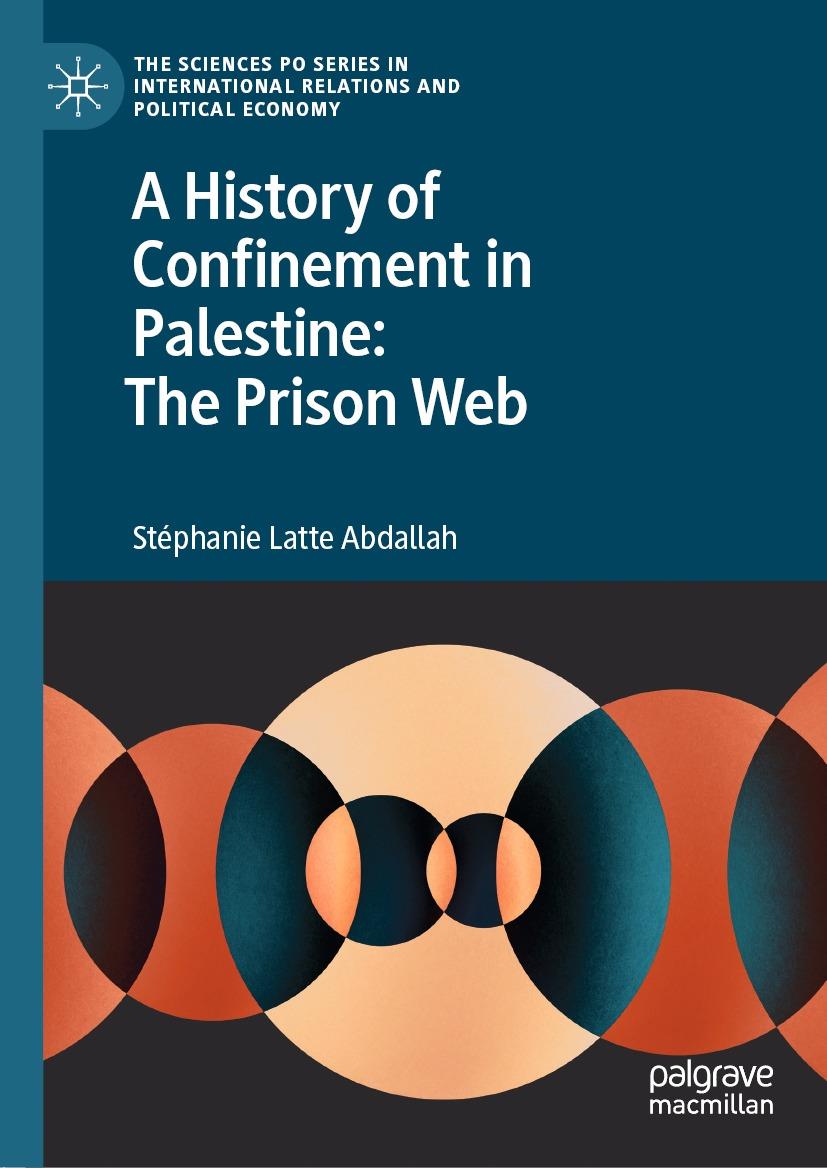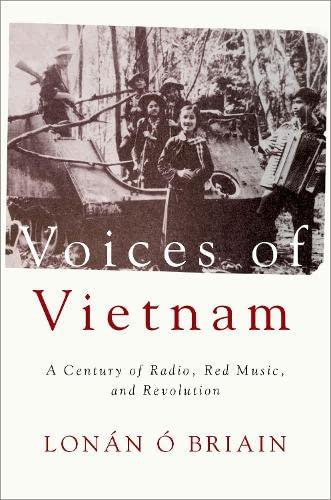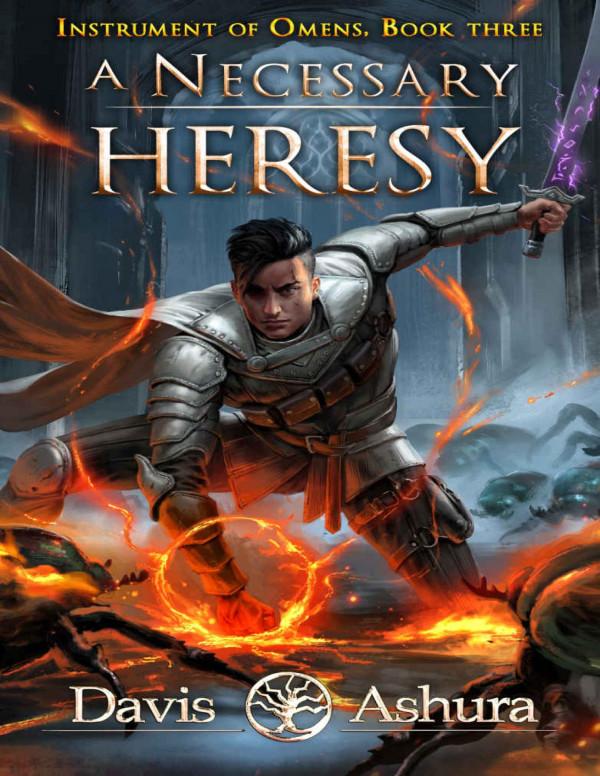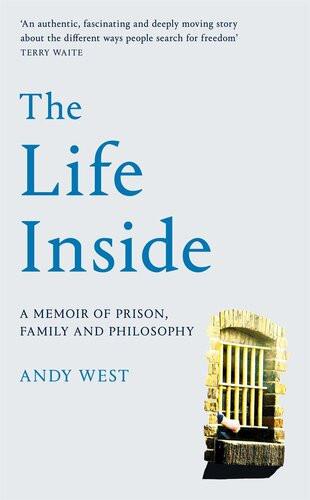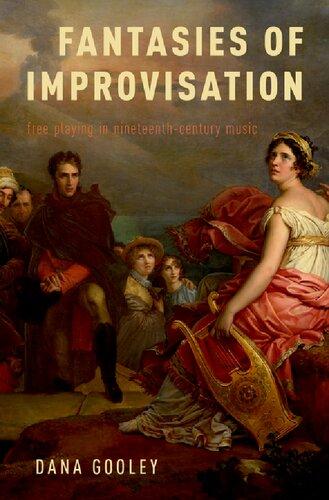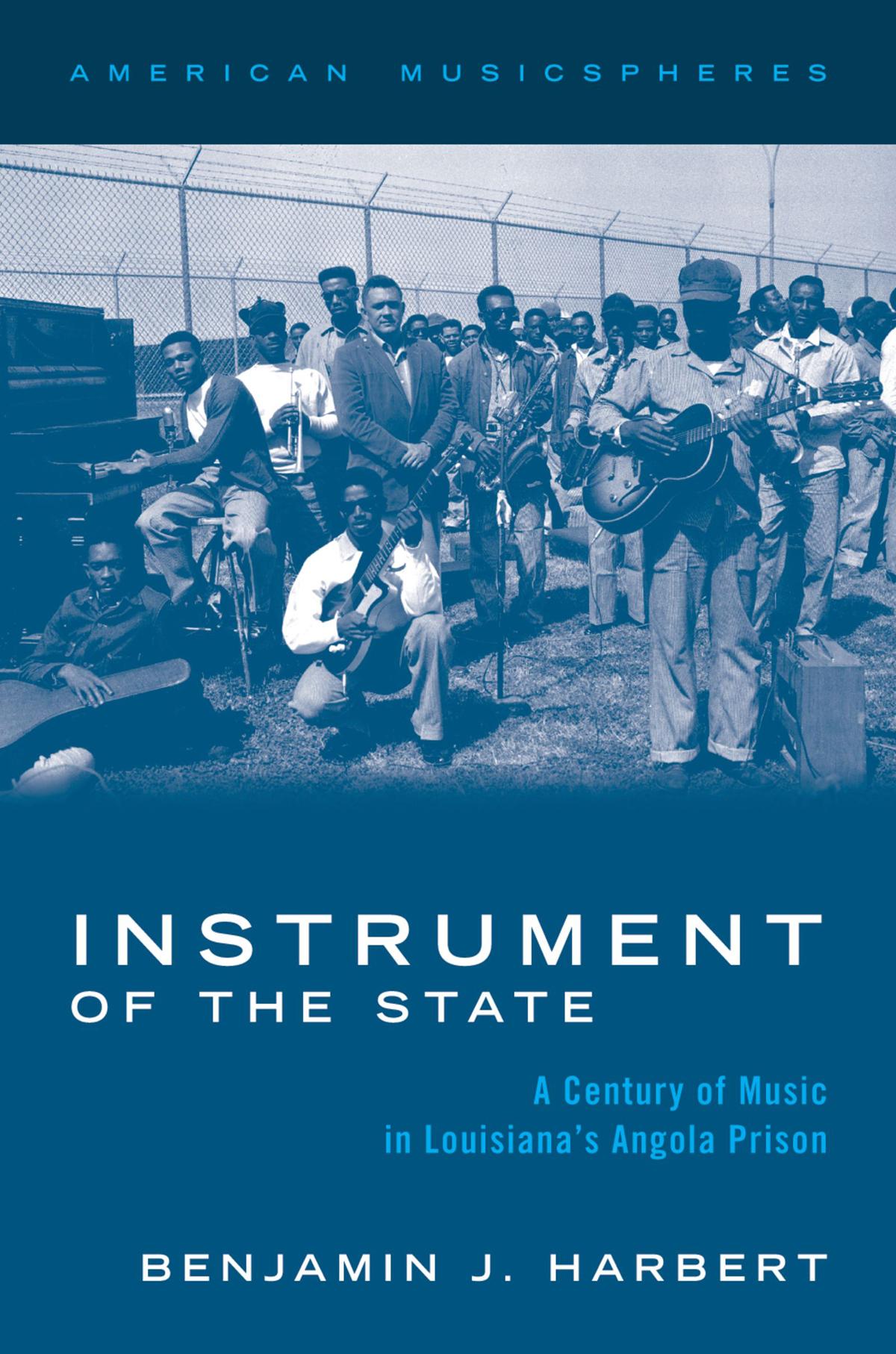Instrument of the State
ACentury ofMusic in Louisiana’s Angola Prison
BENJAMIN J. HARBERT
Oxford University Press is a department of the University of Oxford. It furthers the University’s objective of excellence in research, scholarship, and education by publishing worldwide. Oxford is a registered trade mark of Oxford University Press in the UK and certain other countries.
Published in the United States of America by Oxford University Press 198 Madison Avenue, New York, NY 10016, United States of America.
© Oxford University Press 2023
All rights reserved. No part of this publication may be reproduced, stored in a retrieval system, or transmitted, in any form or by any means, without the prior permission in writing of Oxford University Press, or as expressly permitted by law, by license, or under terms agreed with the appropriate reproduction rights organization. Inquiries concerning reproduction outside the scope of the above should be sent to the Rights Department, Oxford University Press, at the address above.
You must not circulate this work in any other form and you must impose this same condition on any acquirer.
Library of Congress Cataloging-in-Publication Data
Names: Harbert, Benjamin J., author.
Title: Instrument of the state : a century of music in Louisiana’s Angola prison / Benjamin J. Harbert.
Description: [1.] | New York : Oxford University Press, 2023. | Series: American musicspheres series | Includes bibliographical references and index.
Identifiers: LCCN 2022060595 (print) | LCCN 2022060596 (ebook) | ISBN 9780197517512 (paperback) |
ISBN 9780197517505 (hardback) | ISBN 9780197517536 (epub) | ISBN 9780197517543
Subjects: LCSH: Music in prisons—Louisiana—Angola. | Prisoners—Louisiana—Angola—Social conditions. | Louisiana State Penitentiary—History. Classification: LCC ML3920 .H33 2023 (print) | LCC ML3920 (ebook) | DDC 365/.668—dc23/eng/20221219
LC record available at https://lccn.loc.gov/2022060595
LC ebook record available at https://lccn.loc.gov/2022060596
DOI: 10.1093/oso/9780197517505.001.0001
Contents
ListofFigures
ForewordsbyCalvinLewis,MyronHodges,andWayneKramer
Acknowledgments
NotetotheReader
AbouttheCompanionWebsite
Introduction
The Book as a Multimovement Musical Piece
Uncovering Histories
The Musicality of Prison
A Brief Overview of Louisiana Behind Bars
1. Astonishment
Models: Angola’s Preprison Polyphony
Outlawry|Out-of-Law
Penance|Penitentiary
Slavery|Plantation
Imagining Folklore in the Convict-Lease System
The Astonishing Polyphony of State Control
Enter Lomax and Lead Belly
Curating “Prison Music”
Conclusion
2. Association
Thinking Beyond the Individual CarceralAssociationalism
SongsoftheGunmen
FindingSwinginaPrisonNewsmagazine
A Sudden Call for Attention
Hillbilly to Jazz in Camp E
The Rhythm Makers of Camp A
The All-Stars Start in Camp H-2
Minstrelsy to Jazz with the Nic Nacs in Camp A
The Nic Nacs Occupy the New Prison
The Warden’s Band
Listening to Jazz in Prison
3. Politics
Singing Out-of-Law
OutlawryoftheField
MusicofOutlawry
Associations/Cliques and By-Laws/Muscle
The New Feel
Freedom in a New Unity
Transforming the Listenership
Adding Rhythm to the Concept
The Long Arm of the Band Room
The New Nic Nacs
Coda
4. Surfaces
War Zone
The Rodeo Surface Redraws Boundaries
The Westernaires 1.0
The Westernaires 2.0
Silencing the Black Panthers
Free-World Surfacework
The Demise of the Westernaires
Banquets
Sublime Surfaces
Lingering Surfaces
5. Inflection
The Promise of Otis Neal
Uneven Reforms of the Field
Time Factor
Def Posse
Megasound
Big River Band
Gospel Melodies
Conclusion
6. Recapitulation
Inflection by Statute
Strapped Rodeo Surfaces
TransposedSecularBanquetSurface
HostileTakeover
BanjoScars
Playing Politics
Association for Rights
Property
Assembly Mobility
Astonishing Call of the Canaries
LeadBellyRemembered
ARadicalRevisionofanOldMetaphor
Notes
References
Index
Figures
1.1. 1.2. 1.3. 1.4. 1.5. 1.6. 2.1. 2.2. 2.3. 2.4. 2.5. 2.6. 2.7. 3.1. 3.2. 3.3. 3.4. 4.1. 4.2. 4.3. 5.1. 5.2.
5.3. 6.1.
6.2.
6.3.
Angola landing on the Mississippi River, ca. 1900–1910
Picking cotton, Angola State Farm, 1901
Map of Angola Camps (illustration by William Livingston)
Quarters A, Angola State Farm, 1901
“Fun in levee camp, Atchafalaya River”
Stills from “Leadbelly,” in MarchofTime
Men singing for Harry Oster
A trusty guard on duty, 1955
White jazz orchestra rehearsing in Camp E
Outdoor festival performance
1940s Camp A Minstrel Troupe
The new main prison, 1955
Voting for Inmate Council in the main prison, 1955
Transcription of “Rumor Enough,” sung by Charles Neville
Transcription of “Tone the Bell,” sung by Charles Neville
Horizontal and vertical illustrations of music
The major (Ionian) and the Lydian scales
The Westernaires at the 1968 rodeo
Westernaires playing an outside show
The Scientists of Soul perform in front of the Big Stripe Band Ro om, 1976
Otis Neal, left, 1978
Fieldworkers after the decommissioning of the sugar mill, ca. 19 89
Photos from a 1983 banquet
Filming FollowMeDownwith the Pure Heart Messengers, 2009
Larry Wilkerson and Myron Hodges perform outside the Ranch House, 2013
Guts and Glory Band performing in the crow’s nest, 2013
6.4.
Dancing to the Jazzmen at the music stage outside the rodeo ri ng, 2013
6.5.
6.6.
William Hall in his woodshop in the recreation building, 2013
John Henry Taylor singing on the perimeter of the main prison, 2009
6.7.
Mickey Lanerie and Laird Veillon in the band room at the main p rison, 2008
Forewords
People on the outside say we are “scums of the earth.” Others treat us like we are just a number. And yet, we are human beings, musicians with gifts that will never be confined. When I was first introduced to Benjamin J. Harbert, I thought he was just another free person that would come in, take pictures, and tell us what he wanted—and that we would never hear from him again. But he continued his communication with the musicians and continued to come back. Harbert is not just an author/filmmaker or music scholar/educator. In our eyes, he’s a person that incarcerated musicians in Louisiana prisons can call a friend. Harbert allowed the men and women to share their musical experiences without dictating our words, as other authors and film directors have done. He was genuine and down-to-earth.
Harbert not only interviewed those of us in the music fraternity, but he also researched books, magazines, and newspapers and spoke with historic legends who had been incarcerated. He did this to fully understand what it means to be a musician while incarcerated. He cared about our stories. Instrument of the State covers present musicians and the legends that paved the way for today’s musicians. Harbert researched all the different entities that made Angola what it is today, from administration, government, wardens, floods, legislations, movies, documentaries, and the legendary musicians incarcerated at Angola. The author covered it all, and I am amazed by his research.
As a musician, I know that this is a community where the past means so much. At Angola, someone will always speak of earlier bands and musicians and ask to hear the music from the bands that made an impact in the past. You need to know the history of the past musicians because you want to continue that legacy.
By educating me about the history of music here at Angola, this book allows me to better pave the way for up-and-coming musicians and bands at the prison. Hopefully, new arrivals will be inspired to become part of a legendary music scene during their incarceration. Reading Instrument oftheState has inspired me to work harder to keep the musical legacy alive here. This is why we care about legacy we are caring human beings.
Calvin Lewis, drummer for the Angola Jazzmen Band Angola, LA April 2022
I want to say how deeply honored I am to be a part of Instrumentof theState. Words cannot express the debt of my appreciation to the author for being so intrigued with Angola’s music culture and investing so much of himself through years of research and hard work. The book highlights a prison music culture that exists in no other prison in the nation.
For prisoners in other parts of the country, I imagine that the notion of a convicted felon, especially a lifer, privileged with so much liberty to play music would be inconceivable. Nonetheless, this level of performance is managed and produced by the inmates themselves. Here, an inmate band can be commissioned to play for events ranging from interinstitutional banquets to festival fairs throughout Louisiana. InstrumentoftheStatedetails how musicians of Angola at times seem to possess an uncanny ability to take even the most unlikely mixture of people, and unify them with music.
Having been incarcerated for over thirty-eight years, I’ve spent much of my time playing music for various events inside and outside of Angola. Some people (or fans) whom I’ve met along the way travel long distances to hear me play or see a particular Angola band, purchase a band T-shirt, have it autographed by certain band members, and appreciate a rare personal encounter with those of us behind the music.
Instrument of the State is like no other book I’ve read about Angola because it doesn’t stereotype its subjects. Instead, it focuses
on the musical history and the endeavors of men serving time, those of us who seek to achieve a sense of purpose, meaning, peace, and normalcy in our lives, using our musical abilities to captivate the hearts and minds of our audiences and our keepers. In this way, we transcend the social boundaries of prison itself. This book is a true testament to the ability of the human spirit to thrive, even under the worst circumstances.
Myron Hodges, guitarist for Angola Big River Band Angola, LA April 2022
The Framers started out with a truly revolutionary idea: democracy, “with liberty and justice for all.” A grand reach, no doubt about it. To date, though, the in-real-life application of this aspirational principle has fallen woefully short. As it stands, “all” turns out to mean white, male, middle class (or above), and decidedly heterosexual. You’re not “all” if you’re anything other than white and are of limited economic means. Nowhere is this reality more apparent in America’s jails and prisons.
Today, over two million of our fellows—men, women, and children are incarcerated. Let that sink in. The United States of America has more American citizens locked up today than any country inthe history of theworld, most of whom are part of the aforementioned not all group. That we had outlawed slavery via the Thirteenth Amendment to the US Constitution “except for the punishment of crime” explicitly represents a degree of deliberate human suffering and cruelty that is as vicious as is possible to imagine.
InstrumentoftheStatechronicles this derangement using stories of people going as far back as 1699 when Louisiana was still a French colony. Harbert documents stories of prison sentences served in the American South, namely Louisiana State Penitentiary, Angola. This history is not only rich and complex, it is often incredibly cruel yet tempered with life-affirming music made by people who were forced to endure disproportionately heavy sentencing inside profoundly corrupt institutions. It’s a mouthful, I know, but this is
not a simple account of one man’s struggle. These are centuries of inequity.
Instrument of the State is a deeply and accurately researched work. Harbert reconstructs the events and abuses that grew out of the “convict leasing” system in American corrections. From the founding of the penal system through the decades, up to and including today, this book is a journey worth taking. You will experience it through the lens of musicians who lived and expressed it. From the early deprivations up through the time of Alan Lomax and Lead Belly to today, music serves as a salve and a rejuvenator for us all—and even more poignantly for those who were locked up.
Prisoners found release and hope in the music they could create and share in prison. This may be the most revolutionary, lifeaffirming act ever to grace humanity. A tradition born in pain and cruelty that has been forged into a powerful transformative force is an exceptional American undertaking. Here, you will feel that walk to freedom. It reads like fiction, but it’s not. This is the real deal and more inspiring than you could have dreamed.
Author Benjamin J. Harbert has done this country a great service. Instrument of the State is a major work of social, cultural, and academic accomplishment. It’s a story that should be required reading for every student in America and every musician as well. It shows us who we are at our worst and what we’re capable of at our best, reminding us that America’s prisons are an abomination of justice and that the people who have populated them over history have discovered, through the art form of music, a path to unadulterated transcendence.
Wayne Kramer, cofounder of Jail Guitar Doors USA and guitarist for the MC5
Los Angeles, CA July 2022
Acknowledgments
The musicians at Angola who informed this book include Jerry Allison, Russell Joe Beyer, Darryl Bowman, Clint Bracken, Leotha Brown, Curtis Carmac, Sidney DeLoach, Michael Dyer, A. J. Freeman, Darren Green, Jason Hacker, William Hall, Clifford Hampton, Warren Harris, Lionel Jackson, Gary Jameson, Jimmy Johnson, Frederick Jones, Johnny Jones, Ray Jones, John Kennedy, Gary Landry, Mickey Lanerie, Emmanuel Lee, Jesse Lee, Stanley Lindsay, Kernis “Big Lou” Louviere, Donald Lumbel, James Marsh, Emmitt Messick, Thomas Oliver, Albert Patterson, Robin Polk, Walter Quinn, Brian Russel, Art Silvertone, Jewell Spotville, Samuel Stark, Herman Tausing, John Henry Taylor Jr., Donald Thomas, Merrit Thomas Jr., John Tonabee, Matthew Trent, Laird Veillon, Charles Venardo, Daniel Washington, Bud Wilkerson, Larry Wilkerson, Andre Williams, and Herbert Williams. Assistance from the staff at TheAngolitecame from Kerry Meyers and Jeffrey Hilburn. Thanks to Wayne Kramer for years of support and for writing a foreword. Special thanks to musicians Calvin Lewis and Myron Hodges, who read a draft of the book, gathered and delivered feedback, and took the time to write forewords, all while still incarcerated at Angola.
Staff and administration who provided coordination and additional conversations include Secretary James LeBlanc, Communications Secretary Pam Laborde, Assistant Warden Cathy Fontenot, Public Information Officer Gary Young, Executive Management Officer Angie Norwood, Major Wilfred Cazelot, Major Joli Darbonne, and Recreation Director Gary Frank. Sheryl Ranatza and Stephanie Perrault with the Angola Museum also helped with research and during visits.
Student research assistants were Rose Hayden, Bethany Hou, Susanna Jivotovski, James Khoury, Sophia Kloncz, Viktoriya Kuz,
Nadia Mahmassani, Samantha Pasciullo Boychuck, Allie Prescott, Dominique Rouge, and Jin-Ah Yang. They contributed hundreds of hours of interview transcription, media logging, reading, editing, historical research, and critical listening.
Many experts at various institutions assisted me in finding traces of Angola’s music in the historical record. These include Todd Harvey at the American Folklife Center of the Library of Congress, Jeff Place at Smithsonian Folkways, Anna Lomax Wood at the Association for Cultural Equity, John Leonard and Adam Machado at the Arhoolie Foundation, Germain Bienvenu at the Louisiana State University Libraries, and Charlene Bonnette at the State Library of Louisiana. Ian MacKaye helped repair and digitize old audio cassettes I brought back from the prison. The most expert and sustained assistance and camaraderie came from Marianne Fisher-Giorlando. She has given her boundless energy to this book and countless other histories of Louisiana’s prisons.
Several organizations offered me a public forum to present components of this book and walk away with critical feedback, including Smithsonian Folkways, the Radcliffe Institute for Advanced Study, the Society for Ethnomusicology, the International Council for Traditional Music, Georgetown University’s America’s Initiative, the Academy of Criminal Justice Sciences, the American Society of Criminology, Georgetown University’s Prisons and Justice Initiative, the Council of State Governments Justice Center, Resurrection After Exoneration, the Society for American Music, the International Association for the Study of Popular Music, the West Baton Rouge Museum, and the University of Oslo.
Many colleagues helped read through chapter drafts, strengthening the scholarship from many disciplinary perspectives. Readers were Mike Amezcua, Katie Benton-Cohen, Denise Brennan, Matthew Carnes, Anna Celenza, Kate Chandler, Louis Chude-Sokei, Nicole Brittingham Furlonge, Jenny Guardado, Brian Hochman, Birgitta Johnson, Erick Langer, Mireya Loza, Chandra Manning, Brian McCabe, Ingrid Monson, Ricardo Ortiz, Douglas Reed, Adam Rothman, Milena Santoro, Carole Sargent, John Tutino, and the peer
reviewers through Oxford who gave invaluable feedback for the proposal and the first draft.
Writing for Oxford University Press made this a better book. Series Editor Mark Slobin encouraged the work, eventually reading multiple drafts quickly and carefully. Oxford editors Suzanne Ryan and Lauralee Yeary both gave encouragement and expertise through the complexities of publishing.
Many others helped in various ways, from engaging in sustained discussion, offering perspectives, listening, supporting, to joining me somehow in the project. These people include Marié Abe, Jack Bowers, Laurie Brooks, Charlotte Brown, Gwynne Brown, Katherine Brucher, Brendan Canty, Bill Cleveland, Mary Cohen, Bernie Cook, Andrew Raffo Dewar, Mark DeWitt, Consuela Gaines, Jesse Gilbert, Chauncy Godwin, Christoph Green, Mark Howard, Wendy Jason, Wayne Kramer, Ashley Lucas, Bill Macomber, Áine Mangaoang, Bryan McCann, Andy McGraw, Maria Mendonça, David Novak, Marina Peterson, Ali Jihad Racy, Matt Sakakeeny, Roger Savage, Huib Schippers, Anthony Seeger, Aram Sinnreich, John Slattery, Maria Sonevytsky, Nick Spitzer, Chris Waterman, Peter Yates, and also my departmental colleagues in music at Georgetown, current and former, Anna Celenza, Anthony DelDonna, Jay Hammond, Rufus Jones, Carlos Simon, and Robynn Stilwell.
My family has been a part of this, willing and occasionally unwilling. Thanks to my wife, Alison, my parents, Dick and Janet, and my children, Eli and Bea.
And a very special thank you to the late Charles Neville.
Note to the Reader
A few comments about this book before you begin.
Reactions
If the stories of musicians in this book move you, and if the perspective on incarceration and the criminal justice system shocks you, I encourage you to do something with those feelings. Consider supporting the following organizations. Ones that support incarcerated musicians and prison art programs include:
Justice Arts Coalition, www.thejusticeartscoalition.org
Jail Guitar Doors, USA, www.jailguitardoors.org
William James Association, www.williamjamesassociation.org
Beyond the Bars, www.beyondthebarsmusic.org
Give a Beat, www.giveabeat.org
Music on the Inside, www.musicontheinside.org
Songs in the Key of Free, www.songsinthekeyoffree.com
Musicambia, www.musicambia.org
Organizations that address mass incarceration in the United States through research, information presentation, lobbying, and direct involvement with prisoners and returning citizens include:
ACLU of Louisiana, www.laaclu.org
Louisianans for Prison Alternatives, www.prisonreformla.com
VOTE | Voice of the Experienced, www.vote-nola.org
Southern Poverty Law Center, www.splcenter.org
Justice and Accountability Center of Louisiana, www.jaclouisiana.o
rg
Power Coalition for Equality and Justice, www.powercoalition.org
The Sentencing Project, www.sentencingproject.org
The Marshall Project, www.themarshallproject.org
Conventions
For this book, I capitalize “Black” and “White.” With my capitalization of the word “Black,” I follow the growing standard convention to convey a sense of shared experience in a racialized country, signify that race is a historical and social construction and not a natural trait, and encourage respect. Throughout the book, I also capitalize “White,” which is not a widely used convention. My reasoning is different than for capitalizing “Black.” By no means are Whiteness and Blackness balanced racial equivalents. I am aware that many white supremacist groups capitalize “White” and also understand how “white” signifies a neutral racial category (a signal that most Americans of European descent benefit from not having to think about “Whiteness” every day), but I believe that “White” is a useful convention for a book that engages race at Angola Prison.
In a historically and majority-Black prison, Whiteness is a complex, evolving, and everyday experience with its own history. Whiteness at Angola comes with its own set of privileges and challenges. Capitalizing the term signals that race is a social convention at play in macro- and microlevels in the lives of prisoners, guards, administrators, and visitors. This conventional binary of “Black/White,” however, ought not to simplify the gray areas, the complications, and the changing definitions of racial logics.
About the Companion Website
http://www.oup.com/us/InstrumentoftheState
Username: Music1
Password: Book5983
This book features a companion website that provides material that cannot be made available in a book, namely audio recordings and video clips that supplement the discussion and specific musical examples. The reader is encouraged to consult this resource while reading through the book.
Introduction
Guitarist Russel Joe Beyer finished tuning his Telecaster and glanced at the other men assembled on stage. Each band member was engaged in a discrete task in preparation for their performance. It was intensely foggy, a day when most prisoners slept in if their jobs allowed it. Beyer and his bandmates wore T-shirts decorated with musical notes and their band logo emblazoned on the front: THE JAZZMEN. Despite the name, the band played just about every style of popular music. Their versatility and repertoire kept them in demand for events within the prison. Beyer was one of several topnotch musicians in the band that defined Angola’s secular music scene at that time. Influenced heavily by R&B, they adapted popular songs but were always ready to launch into a distinctive second-line groove if they saw anyone from New Orleans in the crowd.
As I talked to Beyer, another prisoner jokingly asked him for an autograph. We both smiled. Riffing off the joke, Beyer told me that his real motivation for playing wasn’t fame. It was to engage in a rare creative experience behind bars. “If you’re a musician,” he said, “you know the feeling. You kind of live for that, just to be able to improvise and get a group going. . . . It gets you out of here for a while. You’re no longer at Angola.” In other words, music was a limited experience of freedom for those who had mostly lost theirs. Adding up the time served by the seven members of the band, they had been in Angola for exactly 100 years.
I found myself talking to Beyer during one of several research trips to Angola, investigating music at the Louisiana State Penitentiary. A guitarist myself, I noticed his instrument and asked him about it. He handed it over, and I played a few chords, testing the neck’s action and balance. Most musicians who played in the church groups at Angola had recent models of affordable Yamaha guitars, bought by evangelical organizations whose sponsorship had
an outsized influence on Angola’s music scene. In contrast, Beyer’s instrument seemed like it had seen better days. “The tuning keys were on a pedal steel guitar, and the neck was a Fender copy guitar,” he explained. “It’s got a Fender Tele pickup and a Gibson humbucker pickup, so it’s got everything on it. Nothing original except the body.”1
It was hard not to read that last statement as a powerful metaphor: “Nothing original except the body.” It seemed to mimic the dehumanizing way prison wipes away individual identity, leaving behind only the physical form. I imagined the original Telecaster’s transformation as a symbol of mortification. Or perhaps Beyer’s guitar was a metaphor of transformation, closer to something heard from prisoners: that they have changed, that they are new people now, bearing little resemblance to who they were when convicted. But wandering into the realm of metaphors took me away from the moment. I risked missing the more intriguing stories that Beyer’s guitar held. Who had played those instruments that contributed the various parts to the Telecaster? Under what circumstances were those instruments decommissioned? How did prisoners learn to modify and repair their instruments? What allowances did the prison give to use tools and salvage instrument parts? Did Beyer have to keep it safe, guarding against scavengers who might envision other uses for guitar parts? These questions about materials promised to get me closer to the musician’s everyday experiences than metaphor would. I kept this in mind when attempting to describe how prisoners have managed to be musicians while incarcerated at the Louisiana State Penitentiary, also known as Angola.
Metaphor is a strong temptation in representations of incarceration, as, from afar, prison seems to encapsulate fundamental aspects of the human condition. A book about prison music risks conjuring poetic images. “Prison” and “music” seem perfectly opposed, the former representing a limitation and the latter, ultimate freedom of expression.
And it is true that punishment can silence the voice. In Lars von Trier’s Dancer in the Dark (2000), Selma, played by Björk, begins
singing on the gallows. As her executioners watch, they can’t help but listen. The trap beneath her feet opens. Her death stops the song, the rope against her now still throat. Music can also subvert oppression. Momentary freedom of song can reveal a fundamental unfreedom. Countless protest songs capitalize on this. Prison and music can also exist in tension, such as in the songs that incarcerated musicians sang to folklorists in the early half of the twentieth century. Listening in context, we can hear injustice, the humanity calling to us in song through the gates or from shackled prisoners. But as I said earlier, poetry can get in the way of understanding the everyday. Prisoners come to prison with an urgent set of more practical concerns.
Early in my visits, saxophonist Leotha Brown shifted me away from my poetic notions of “prison music.” As he explained, the prison was not what he expected upon arrival in 1964. “I wasn’t used to a penitentiary culture,” he said. “It was like going into another country. There were things that I was not accustomed to—things I didn’t even know existed. The only thing I knew about prison was what I had seen in movies. I thought everybody would have chains around their legs.”2 In time, Brown learned to navigate prison and adapt to the changes over the years, and his experience is both tragic and illuminating.
Having played music while incarcerated in Angola for forty-five years, Leotha Brown was the de-facto music historian. Over the decades, he participated in and witnessed multiple changes in the music scene. Brown had firsthand experience singing while working in the fields, learning to play avant-garde jazz at yard shows, running a radio show for the prisoner-run radio station, and supporting gospel musicians in the prison chapel. His broader perspective as a practicing musician at Angola revealed the complexity of musical life. Brown and dozens of other musicians helped me understand how to separate poetry from realities, tying musical activities to social conventions at Angola.
In the Camp F band room, where we often met, the mere presence of musical instruments transformed a drab cinderblock
room into a space filled with possibilities. Perched on stools, we moved from decade to decade as I took notes. We usually discussed how important music was to his life and the lives of his collaborators. Wrapping up our discussion one day, I asked: “Where did all these instruments come from?” Leotha answered, matter-of-fact:
Some are personal instruments, and some belong to the state. The Inmate Welfare Fund has supplied instruments for them. But some of the guys have taken the initiative to form what you call a music club. They raise money. They sell food for concessions and buy instruments. The traveling band itself, I think they have T-shirts, and then they have a CD that has been made here, too. All of that goes towards the purchasing of instruments for the musicians.3
The rush of practical concerns immediately seemed more interesting than any “prison music” poetics. How do you form a club? Who manages club finances? Were the Jazzmen T-shirts and the po-boy sandwich I had ordered from the concession stand all part of a music economy? How might a self-produced CD differ from the folkloric recordings we have at the Library of Congress? These practical questions led me to conversations about everyday experiences that seemed unique to Angola, understanding a musical history of a prison built from the sheer effort of prisoners who had a million reasons to play music.
Leotha Brown was one of a few people I talked to who understood what it was to be a musician based mainly on his experience playing music in prison. While I will always remain interested in musical style and untangling aesthetic experiences of music, learning about the practical aspects of being a musician in prison helped me pull “music” and “prison” together in meaningful ways. For prisoners, I would discover, prison affects music, limiting opportunities to perform certain styles, in certain places, or with particular other musicians. Or the prison administration might request certain kinds of performances for free world audiences. These performances might cater to audiences curious about the welfare of prisoners or doubtful of the administration’s competence. Music also affects prison. Many prisoners told me that music was a way to escape. Indeed, music can distract from harsh and intolerable
conditions, but music can also be a pretext for prisoner negotiation with officers and administration. Musical needs can trump custody needs, for instance, securing rehearsal space, acquiring proper equipment, and moving band personnel through ordinary security. In this way, prisoners can use musical activity to negotiate the terms of their confinement, even if only in small ways.
It quickly became clear that for incarcerated musicians, prison and music constantly intertwine. As one veteran officer told me early in my visits there, “Music is entangled in everything we do.”4 Music and imprisonment are both social phenomena initiated, maintained, and negotiated by all members of the institution. For my purposes, understanding “prison music” means attending to dynamic relations between these two words. Prison music is the organized sound of laws, policies, missions, and social consequences.
The Book as a Multimovement Musical Piece
As you will read chapter by chapter, from the nineteenth-century preprison slave plantation to the late twentieth-century prison, political, economic, and racial issues are inseparable from music. Policy changes, legal decisions, demographic shifts, reform, and economic realities all change the sound of music. I am interested in that change. Various styles of music will wax and wane. Listening to change will help us hear the connections between prison rules and music. In contrast with folklorists who preceded me, I am not collecting two-and-a-half-minute-long songs. I am trying to listen longer. What if we think of Angola’s music as a song cycle, a musical sound that has continued for over a hundred years?
Ethnomusicologists gain from thinking of music in larger chunks. Kai Fikentscher suggests that we understand electronic dance music better when listening to the whole evening: the transitions, peaks, and a DJ’s gauge of audience energy on the dance floor.5 Tony Seeger describes how the Suyá in the rainforests of Brazil produce year-long suites of music, following cycles of ritual affirmations of community ties.6 But how might we listen if Angola’s music has
continued throughout the twentieth century? How do we listen to shifting prison philosophies, management, and operations? These nonmusical changes become audible when they create and collapse new opportunities for prisoner collaboration.
The chapters will trace an overall stylistic arc that includes an active jazz scene in the 1950s and a shrinking secular music scene in the 2000s that finds room in the institutional support for gospel music. Each chapter develops a specific theme, often related to developments during that era. The stories of collaboration create a series of perspectives that I have found useful for thinking about music in prison.
Chapter 1 accounts for the astonishmentthat music often adds to social encounters. Resurrecting an older definition of “astonishment” to mean a shock to the senses, I consider how music can refine experiences, stereotype or redefine performers, shock people out of prejudices, or distinguish a moment from ordinary life. In the early years, music at Angola develops into a symbol of oppression, control, promise, horror, and folk tradition. Crucially, this chapter identifies the three main strands of Angola’s mission: outlawry, plantation, and penitentiary.
Chapter 2 develops the idea of association, a collaborative musicmaking that relies on the institution’s support and is therefore tied to the multiple missions of incarceration. Association, the act of coming together for a common purpose, is inherent to music anywhere. But the folkloric notions of prison music as an individual endeavor obscured the prolific jazz practices that dominated Angola’s musical activity in the 1950s. This chapter reveals how jazz depended on and supported the prisoner associations that flourished during a decade of progressive reform. The focus on jazz, prisoner-run media, and the shift to a modern prison building show how collective activity can secure small individual freedoms.
Chapter 3’s focus on politics follows a group of musicians who develop avant-garde jazz to think beyond the status quo. Despite the institution’s oppressive formal and informal rules in the 1960s, musicians helped define and articulate higher principles of music and radical politics.
Chapter 4 examines the many ways prisoners engage surfaces of the prison—boundaries where they interact with outsiders. These meeting places develop out of negotiations with an administration under fire for mismanagement and facing underfunding. The alliances that form help fund music programs and offer slim chances for release as the concept of prisoners’ rights develop.
Chapter 5 traces the years following prisoners’ rights gains. A wake of musical change followed dramatic changes of the mid-1970s when court decisions resulted in federal receivership. Accounting for the inflectionof post–prisoners’ rights reveals how music maintained incremental gains and expressed the unevenness and failure to deliver reform.
Chapter 6 picks up on my visits to the prison from 2008 to 2016, offering a recapitulationof all five themes. I argue that music is still astonishing, associative, political, part of prison surfaces, and inflected toward disparate goals and promises. In this final chapter, I aim to show how these five historical perspectives of the prison illuminate current practices.
Ultimately, I hope to show that music reveals less about the nature of the prisoner than it does to make audible the many social interactions that prisoners negotiate. As you imagine the sounds described in each chapter, I urge that you listen for the roots of prison music: changing laws and policies, economic and moral exchanges, claims for rights, and legacies. This approach to prison music is listening to its resonance, how sound butts up against structures and makes legacies audible. The musicians themselves are the ones who initiate the sounds, find the means for achieving a new level of musicianship, encourage others to do the same, make unlikely bargains with administrators, study their audiences, and reveal their fundamental sociality and undeniable humanity.
Uncovering Histories
The research for this book comes from four interrelated efforts: a dissertation, a feature-length documentary film, archival research,
and an oral history collection. The first two were part of my first phase of documenting the lives of musicians in Louisiana prisons (from 2008 to 2012). The second two parts were part of a follow-up phase (from 2012 to 2016) to add historical research and more indepth personal accounts from a wider range of people at Angola. As a more minor yet crucial follow-up effort, I mailed a draft of this book to incarcerated musicians I had interviewed for their feedback.
In the first phase, I received permission from the Department of Corrections to make a film about music in Louisiana prisons. I made several research trips and assembled a crew (sound recordist Chauncy Godwin and cinematographer John Slattery) to film musicians over a year of their lives while incarcerated. We worked within the constraints and the imaginations of prisoners and administrators to identify what to document on film. We wanted to show how music functions in prisons. Angola was one of three sites that we used to present the diversity of musical activity, style, and purpose in Louisiana. As I show in my film and discuss in my dissertation, Elayn Hunt Correctional Center’s more transient population and its designation for prisoners with mental and physical health issues made for an emotionally charged music scene.7 The Louisiana Correctional Institute for Women, the state’s only facility for women, offered a comparative perspective on how gender and incarceration intersect musically. Mental health, a lack of support for musical instruments, more robust family connections and responsibilities, and emotional labor made their choir a place where varied interpersonal dynamics unfolded.8
Angola’s musical history, by contrast, was longer and more plentiful. The state’s most notorious prison had a musical legacy that lives in the archives of the Library of Congress and the record grooves of well-known folkloric recordings. What’s more, the musicians I spoke with at Angola had been there for an incredibly long amount of time. Some began their sentences in the 1960s and remained there when I visited last in 2016. Somehow, they managed to preserve sanity, find unlikely collaboration, and navigate violence at least in part through their engagement with music.
Having screened my film at Angola, I continued working with the musicians who participated in Follow Me Down and the administration as I moved into the second research phase. Angola has a museum and cultivates a public-facing image, complete with what is essentially a public relations staff, making music research potentially valuable in the administration’s eyes. I struck up an arrangement with Assistant Warden Cathy Fontenot to continue my work by collecting oral histories of musicians there. The deal was that I could use the interviews to research this book, and the museum could have the interview recordings and transcripts for their archives. By then, I had established more trust with both prisoners and administrators. I also had demonstrated to them my commitment and follow through, having completed major projects and initiated a related new project with a clear mission for all: to document the musical histories of the prison.
Another possible reason for my access is that music seems innocuous. Often, it is thought of as a light diversion from more serious topics, a “good news” story to counter unsavory attention. Criminologist Leonidas Cheliotis has warned against the arts filling the role of “decorative justice,” a distraction that turns the public away from the urgent problems of mass incarceration.9 Regardless, I knew that the arts were part of daily life in some prisons, that prisoners, administrators, guards, and volunteer outsiders used art to reimagine prisons, find sanctuary, and negotiate small details of their incarceration. I had written my master’s thesis on the Prison Arts Project in California prisons and later created an archive at UCLA of the program’s decades-long history.10 Art can transform experiences and relationships. In prison, that can be powerful. Prison arts programs have provided critical spaces for people to discover possibilities.
In many cases, art that emerges from prisons can offer critiques of the structural problems that lead many to prisons in the first place —primarily economic and racial inequalities. Nonetheless, artistic practice is vital outside of its political promise. Practicing art for the sake of art, as much as incarcerated artists can manage to do that,
